
Final Fantasy IV, titled Final Fantasy II in its initial North American release, is a role-playing video game developed and published by Square for the Super Nintendo Entertainment System. Released in 1991, it is the fourth main installment of the Final Fantasy series. The game's story follows Cecil, a dark knight, as he tries to prevent the sorcerer Golbez from seizing powerful crystals and destroying the world. He is joined on this quest by a frequently changing group of allies. Final Fantasy IV introduced innovations that became staples of the Final Fantasy series and role-playing games in general. Its "Active Time Battle" system was used in five subsequent Final Fantasy games, and unlike prior games in the series, IV gave each character their own unchangeable character class — although at a few points in the story, a dark knight will choose the path of a paladin, or a summoner will evolve to a new tier of spellcasting.

Ice Climber is a platform game developed and published by Nintendo. It was released in 1985 for both the arcade VS. System and the Famicom / Nintendo Entertainment System console. The characters Popo and Nana, collectively known as the Ice Climbers, scale 32 vertically scrolling, ice-covered mountains to recover stolen vegetables from a giant condor. In some European countries, Ice Climber was bundled with the Nintendo Entertainment System.
The Slime series is a spinoff series of games from Dragon Quest featuring its Slime character. Three games have been released, the second of which, Dragon Quest Heroes: Rocket Slime, has been released in North America.

ASH: Archaic Sealed Heat is a 2007 tactical role-playing game developed by Mistwalker and Racjin and published by Nintendo for the Nintendo DS exclusively in Japan. The storyline follows Aisya, princess of Millinear, after a fire monster burns the kingdom to ashes on her coronation day. She gains the ability to revive the dead as ash-formed bodies and sets out to investigate the cause behind the disaster. The gameplay combines tactical grid-based movement of 2D characters in the field with traditional turn-based battles, in which party members are represented by CGI models.

Bleach: The Blade of Fate is a 2D fighting game that features the cast of characters from the Bleach anime and manga. The game featured Nintendo's Wi-Fi Connection, which allowed players to connect and play against players all over the world. The game modes include story mode, arcade mode, VS mode, training mode, challenge mode, and survival mode, time attack mode and Urahara shop. The game's theme song is "Ichirin no Hana" by High and Mighty Color.

Contact is a role-playing video game developed by Grasshopper Manufacture for the Nintendo DS handheld game console. It was published by Marvelous Entertainment in Japan on March 30, 2006, by Atlus USA in North America on October 18, and by Rising Star Games in Australia, Asia and Europe on January 25, 2007 and February 2, respectively.

Heroes of Mana is a 2007 real-time strategy video game developed by Brownie Brown and Square Enix and published by Square Enix for the Nintendo DS. It is the ninth game of the Mana series and the fourth entry in the World of Mana subseries, following the release of Dawn of Mana three months prior. Set in a high fantasy universe, Heroes of Mana follows a young soldier, Roget, as he journeys to defend several nations from the ruthless aggression of his own country in a series of battles.
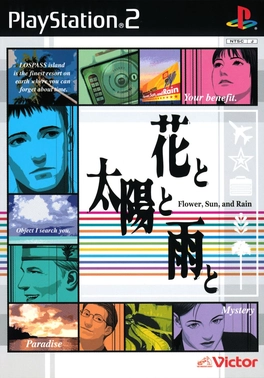
Flower, Sun, and Rain is an adventure video game developed by Grasshopper Manufacture and published by Victor Interactive Software for the PlayStation 2 in 2001. It was initially only released in Japan. A port for the Nintendo DS (DS) was developed by h.a.n.d. under supervision by Grasshopper Manufacture. It was published by Marvelous Entertainment in Japan (2008) and North America (2009) and Rising Star Games in Europe (2008).
Rune Factory is a franchise of fantasy role-playing simulation games created by Yoshifumi Hashimoto and primarily published by Marvelous. The games are developed by Hashimoto's studio Hakama, taking over from Neverland after they ceased operations in 2013. The series began as a spin-off to Marvelous' flagship franchise Story of Seasons. The Story of Seasons references were subsequently dropped starting with the second installment, in order to become its own series. With the first game published in 2006, the property consists of five main-series games, two spin-off titles and numerous manga adaptations.

Final Fantasy Fables: Chocobo's Dungeon is a 2007 role-playing video game published by Square Enix for the Wii. It is an installment in the Chocobo series that focuses on Chocobo and his quest to free a town lost in time from eternal forgetfulness. It is a loose sequel to Chocobo's Dungeon 2 on the PlayStation.
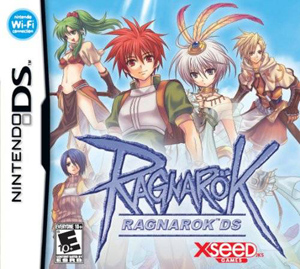
Ragnarok DS, known in Japan as Ragnarok Online DS, is a Nintendo DS video game based on the MMORPG Ragnarok Online and was released in Japan on December 18, 2008. Xseed Games published the game in North America on February 16, 2010. The game was also released in South Korea in June 2009.

Kirby Super Star Ultra is an anthology platform video game developed by HAL Laboratory and published by Nintendo for the Nintendo DS in 2008. The game is an enhanced remake of Kirby Super Star, originally released for the Super Nintendo Entertainment System in 1996, to commemorate the Kirby series' 15th anniversary. The remake retains all game modes found in the original, and adds four major new ones, along with adding updated visuals and full-motion video cutscenes.

The Wizard of Oz: Beyond the Yellow Brick Road, known in Japan as Riz-Zoawd, is a role-playing video game developed by Japanese developer Media.Vision for the Nintendo DS. The game is an adaptation of L. Frank Baum's 1900 novel The Wonderful Wizard of Oz, using its characters, locations and plot. The game was originally published in Japan by D3 Publisher on December 25, 2008. Xseed Games published the game in North America on September 29, 2009.

Phantasy Star 0, also known in Australia and Europe as Phantasy Star: ZERO and sometimes in North America as Phantasy Star Ø, is a Nintendo DS game in the Phantasy Star series, developed by Sonic Team and published by Sega. The game was released in Japan on December 25, 2008; in North America on November 10, 2009; and in Europe on February 12, 2010. The game expands on the gameplay mechanics of Phantasy Star Online, partly by borrowing some elements from fellow online Phantasy Star title Phantasy Star Universe, such as a fully realized story mode for offline play.
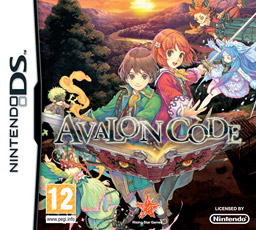
Avalon Code is a fantasy action role-playing game for Nintendo DS. It was developed by Matrix Software and published by Marvelous Entertainment.
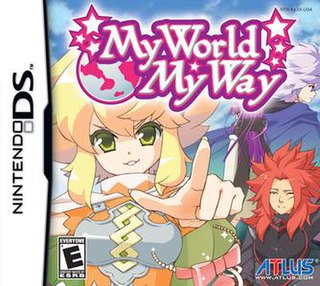
My World, My Way is a role-playing game developed by Global A Entertainment
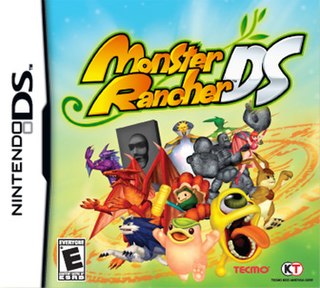
Monster Rancher DS, known as Monster Farm DS 2: Yomigaeru! Master Breeder Densetsu in Japan, is a life simulation video game developed by Cing and published by UFO Interactive Games for the Nintendo DS. It was released in Japan on August 7, 2008 and in North America on August 3, 2010. The game was not released in Europe.
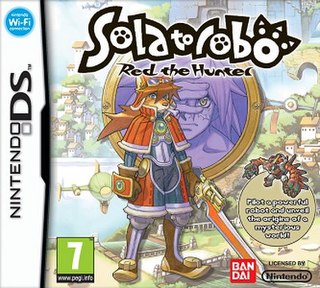
Solatorobo: Red the Hunter, originally released in Japan as Soratorobo -Sore Kara Kōda e- is an action role-playing video game developed by CyberConnect2 for the Nintendo DS. Originally released in Japan by Bandai Namco Games in October 2010, an English version was released by Nintendo for Europe in July 2011 and Australia the following November, with a North American release in September by Xseed Games. It is the spiritual sequel to Tail Concerto, and, like its predecessor, features artwork and character designs by manga artist Nobuteru Yūki and music by Chikayo Fukuda. The game includes animated cutscenes produced by Madhouse, as well as vocal themes performed by Tomoyo Mitani.

epics Inc. is a Japanese video game software developer located in Tokyo, Japan. Originally established as Gen Creative House Co., Ltd. in February 1987, changed company name to G-Artists Inc. in March 1991, then to epics Inc. in June 2006.

Dynasty Warriors 9 is a hack-and-slash video game developed by Omega Force and published by Koei Tecmo. It was released in February 2018 for PlayStation 4, Windows, and Xbox One. It received generally negative reviews from critics.



















